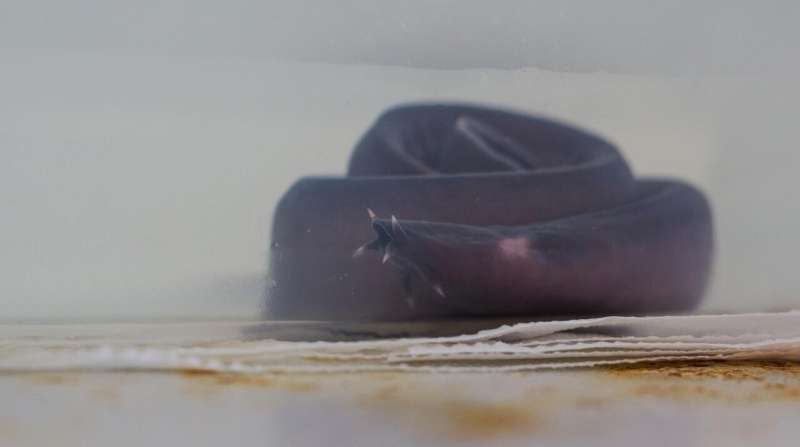New research on hagfish provides insight into evolutionary origin of the eye

The answer to the age-old mystery of the evolutionary origins of vertebrate eyes may lie in hagfish, according to a new study by biologists at the University of Alberta.
"Hagfish eyes can help us understand the origins of human vision by expanding our understanding of the early steps in vertebrate eye evolution," explained lead author Emily Dong, who conducted the research during her graduate studies with Ted Allison, a professor in the Faculty of Science and member of the U of A's Neuroscience and Mental Health Institute. "Our findings solidify the hagfish's place among vertebrates and open the door to further research to uncover the finer details of their visual system."
For years, hagfish eyes were thought to be different from those of vertebrates—so the researchers were surprised to discover hagfish eyes contain many of the same features. These include neurons that connect light-sensitive photoreceptors to ganglion cells, continued growth of the eye late into adulthood, and a hidden layer of support cells that are prominent in other vertebrates and are key to photoreceptor function.
"This is important because it broadens the picture of early vertebrate eye evolution," explained Dong. "The fossil record can only provide us limited information, because soft tissues like eyes do not preserve well. And so we look to living members of these early lineages, such as the hagfish."
Hagfish are the most ancient line of vertebrates still living today, representing vertebrates before the evolutionary appearance of the jaw or paired fins, such as limbs. As a result, studying hagfish provides important information about early evolution in vertebrates, setting the foundation for what scientists can learn by studying other animal models such as zebrafish and mice.
"The data shed light on the confusing and dimly lit evolutionary origins of the vertebrate eye," added Allison, professor in the Department of Biological Sciences and Dong's master's supervisor.
More information: Emily M. Dong et al, Vertebrate features revealed in the rudimentary eye of the Pacific hagfish ( Eptatretus stoutii ), Proceedings of the Royal Society B: Biological Sciences (2021). DOI: 10.1098/rspb.2020.2187
Journal information: Proceedings of the Royal Society B
Provided by University of Alberta




















